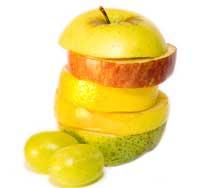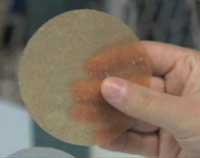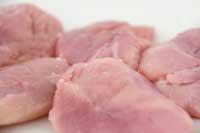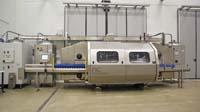Technologies for longer food survival
2011/07/16 Lakar Iraizoz, Oihane - Elhuyar Zientzia
Natural, safe and long-life foods. XXI. 20th century society is increasingly demanding on food. In the Department of Food Technology of the Public University of Navarra they know this and try to combine all these characteristics with innovative food conservation techniques.

Avoid potato darkening with the use of spices, protect foods with a lid that cannot be detected by consumers, or prepare foods in unconventional conditions. In the Food Technology section of the UPNA a series of results and technologies are collected to achieve them. "Many times food companies get in touch with us and inform us of a problem that wants to request or resolve the procedures already developed," explains the head of the department, Paloma Virseda.
Seeking response to potato oxidation was a problem to overcome. To avoid the blackening of the potato you can use many products, but not all are recommended for food. "There are products based on the stove, but they are harmful. We started using a non-harmful chemical synthesized in the laboratory, but we also wanted to replace it," says Virseda.
In the end they saw with cinnamon that they could last 16 days as if the potatoes were freshly cut. The laboratory measured how whiteness, color, etc. change. potato with different treatments, and Paloma has clarified that "with cinnamon we have achieved that the characteristics of the potatoes treated are the same as those of the synthetic product with better results".

It is not the only way they have invented to keep fruits and other under-treated vegetables. In another line of research, they cover food with a kind of second skin that the consumer cannot detect. In this way, they maintain the characteristics of the products and extend their service life. These covers are edible based on proteins isolated from whey from milk, cellulose or starch.
Researchers have shown that edible covers serve not only to keep fruits, but also to preserve meat. For example, they have managed to extend the life of the chicken breast from five to thirteen days. In the case of meats, more than blackening, the function of covers is to protect against microbial attack. As researcher Idoya Fernández explained, "chicken meat is a very perishable food, since it contains many nutrients and a lot of moisture in the skin. This causes bacteria to quickly colonize these foods."
Food in extreme conditions
Through another more complex process, the Department of Food Technology prepares chicken for when it cannot be kept cold, as climbers, for use in catastrophes or for cooking for military campaigns. For this they have had to face all the problems and attacks that can suffer the flesh. And get it.
On the one hand, to stop the degradation caused by microorganisms, they are destroyed by ozone. The researchers consider it advantageous to use ozone because it leaves no residue in the meat, since when decomposing it becomes oxygen.

But ozone treatment is not enough. In fact, meat water destroys the product and does not allow it to remain for long. To solve this problem, the chicken pieces are freeze-dried, that is, they are removed water. The lyophilizer passes the frozen water directly to the gaseous state, avoiding the growth of microorganisms.
In one last step, lyophilized chicken is packed in a modified atmosphere. "Controlling the composition of gases in the packaging environment also improves the structure of products. We are now working to improve packaging conditions for perfect protection," explains Iosune Cantalejo.
Last step, tasting
The development of food storage and processing techniques does not end with the work of researchers from the Public University of Navarra. The head Paloma V?rseda explained that "we are very clear that to finish any research we do we must perform a sensory analysis. It would make no sense to introduce improvements that are not tested."
For this they have people willing to taste the products they develop and perform sensory analysis in professional tasting rooms. In these rooms you can control the light, temperature and smell of air so that nothing influences the results. Thus, "we see in what we will continue to improve," says Virseda. And that opens up a new line of research.
Published in Ortzadar

Gai honi buruzko eduki gehiago
Elhuyarrek garatutako teknologia





